How to Launch an Online Store
How to Launch an Online Store: We’ll go over how to set up and launch a successful ecommerce business in this beginner’s tutorial.
We’ll go through everything you need to know to launch a profitable online store
Owning your own eCommerce business is undoubtedly a fantastic choice, especially because 1 in 3 workers doubts they’ll have enough money to live comfortably in retirement.
When you’re done reading, you’ll be aware of what it takes to start and maintain a profitable internet store.
- How to Launch an Online Store
- Do product research for online sales
- Select a business model for your online store
- Verify your product concept and narrow down your target consumer
- Design your organizational structure and register your business
- How to find and produce goods for your online business
- Write a business plan for your online store
- Create your online store.
- Finish up.
Let’s get going.
How to Launch an Online Store (Step-By-Step Guide)
Do product research for online sales
You must sell one of two kinds of goods in order to succeed:
- A product with great demand in an expanding market.
- A very reliable commodity good.
Niche Product
Niche Product cater to a highly specific clientele. Choose one high-quality product—possibly with several variants—instead of a hundred separate product lines, and create a targeted marketing plan. Niche items tend to have high profit margins and inflexible prices since they are exclusive and in demand.
A hand-thrown pot or a crocheted shawl are examples of one-of-a-kind niche products (handmade leather bags, seasonal preserves).
They can also be businesses that specialize in a specific product, such as Larq, which solely produces self-cleaning water bottles (and a limited number of accessories). Customers of Larq are extremely devoted and will spend more than average for high-quality goods.
Commoditized Products
Commoditized goods are essential or in high demand physical or digital goods with a sizable existing consumer base. They are, in essence, necessities for everyone.
Get inspired on some of the digital products in the list below:
Commoditized goods account for the vast bulk of B2C ecommerce transactions overall. Due to their prevalence and the intense competition in the market, online retailers constantly change their prices to beat out competitors.
Commoditization affects all product categories, including chargers, pots, shoes, software, clothing, toys for children, and everything in between.
It’s interesting to note that commoditization typically starts with a genuinely inventive product that gains popularity before imitation wars are started between rival businesses. The commoditized product market is home to companies like Fujitsu and Hush Puppies, which manufacture shoes.
Many prosperous e-commerce start-ups market a combination of specialized and mass-produced goods. Their hand-selected commoditized products boost the volume of their e-commerce sites, while their specialty products help them stand out.
Consider Berlin Packaging as an example. Custom packaging design is its specialty, although it also offers a variety of items for standard packaging.

How to Choose Your Products
You might already have a wholly original idea, or you might be a designer or inventor with a functional product prototype. If so, that’s fantastic. If not, don’t be concerned; you don’t need to think of the next big thing to launch a prosperous e-commerce store.
Consider what clients want and what you can offer them rather than stressing about breakthrough innovation.
You can create a strong online niche product concept by using the following advice:
- Every problem has a solution: Innovation frequently begins at home. Can you develop sellable products or services to address the issues you frequently face?
- Discover your passion; You need to make sure your new e-commerce venture is based on something you can remain interested in because you will be investing a lot of time and energy into it.
- Analyze your branding potential. In e-commerce, branding is essential. How will your product be branded? Who will be your target market, and how will you build relationships with them using different e-commerce platforms?
- Guilty pleasures are a-go: People frequently spend a lot of money on the things they enjoy. With a solid product, you can almost surely attract customers if you can capitalize on their passions or vices.
- Keep an eye out for opportunity: The most prosperous businesspeople are always on the lookout for market opportunities. You’ll be able to predict consumer trends by keeping an eye on cultural changes. You might even assist them in materializing.
- Embark on a trend early: Speaking of trends, if you do spot a desirable product trend, embrace it quickly. The earlier you enter a developing market, the more probable it is that others would view you as a pioneer in the field. “Authentic” brands receive a larger share of the market.
- Spot niche markets: Is a fantastic illustration of a specialized idea, which is why we discussed it before. Unhygienic water bottles were the issue, and Larq created an online store to solve it (a rechargeable sanitizing water bottle). Before ever completing a single production run, Larq raised millions of dollars in venture money. Ah, the influence of a niche.
By the time you’ve finished thinking, you should have a shortlist of potential goods or services. If so, make an effort to pinpoint each product’s primary rivals. Move on to the next concept, then the next, until you locate a less congested niche if you find yourself in the center of a crowded field. then choose the product you want to use.
- HeySummit is the easy to use virtual event platform that helps you grow your audience and monetize your passion
Select a business model for your online store
You already know what you want to sell; all that remains is to decide where to sell it. Business to consumer, business to business, consumer to business, and consumer to consumer are the four basic business models in e-commerce. Let’s examine each category in detail:
Business to Business (B2B)
Businesses that engage in B2B e-commerce sell goods to other businesses. On occasion, the end-user is also the business buyer (stationery, office technology, or furniture). However, wholesale stock, components, or raw materials are the subject of the majority of B2B transactions.
B2B ecommerce businesses typically have lengthier sales cycles. Due to the need for committee clearance in complex sales, high-stakes transactions might take months to complete. You earn high-value orders and repeat business in exchange for your persistence and tact.
Business to Consumer (B2C)
B2C is, in a nutshell, conventional retail e-commerce. Regular folks are your clients, and you charge retail prices for your goods and services. While some B2C businesses sell actual goods, others market computer software or mobile applications. Others still market different types of recurring subscriptions.
Because the risks aren’t as great, B2C ecommerce has a quick sales cycle. Instead of the entire executive board, one customer is involved in the majority of transactions. Although they generate more sales than B2B companies, B2C companies typically have lower average order values (AOVs).

Consumer to Business (C2B)
Although C2B is a little mysterious, it is a true business strategy. Consumers sell products and services to businesses directly in a consumer-to-business scenario. On freelance websites, where businesses hire independent contractors to execute various assignments, you can observe this business model in action.
Customer to Customer (C2C)
C2C companies link customers to other customers. When people sell goods or services to other people, subscription fees, listing fees, or transaction fees are levied. Examples include online classifieds sites like Craigslist and auction organizations like eBay.
Your company’s organizational structure is defined by its business models, but its revenue models are what make money. Business revenue models, sometimes referred to as value delivery techniques, dictate how you should manage your inventory. Here are some more well-liked choices:
Direct to Consumer (D2C)
Without using a middleman, direct to consumer brands sell products to customers. Some of them produce their goods themselves, while others build a supply chain and contract out the production. D2C businesses avoid selling their goods at wholesale prices to increase profit margins.
Direct-to-consumer (D2C) businesses have a great deal of control over the customer experience because they interact with and sell to consumers directly (CX). They consequently have a propensity to develop sizable and devoted fan bases.
Dropshipping
Dropshipping is an intriguing e-commerce business strategy that allows you to offer a variety of goods on your website while having your supplier handle all of the shipping and order fulfillment.
While it limits your ability to control branding and customer support, it’s a wonderful way to test out new product concepts while saving money on shipping and inventory storage.
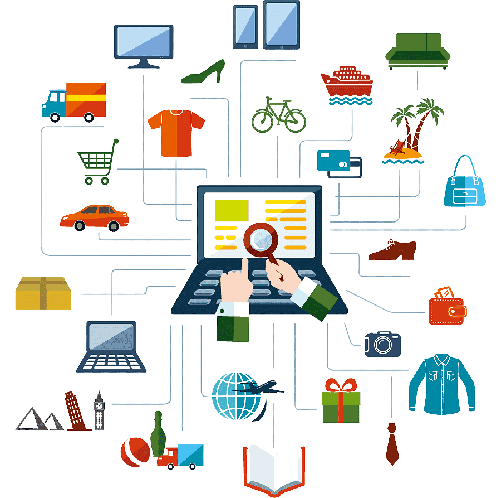
Subscription Services
One example of a subscription service is Amazon’s Subscribe and Save, which offers special price on repeat purchases. Another is the monthly wine delivery service offered by Marquis Wine Club.
Subscription services are frequently combined with other commercial income streams by companies.
Wholesaling
Wholesalers offer products to other companies in bulk at discounts from retail costs. Their clients either resell those goods or employ them in the production of finished goods or the provision of retail services. If you opt for a wholesale business model, think about dividing your target market into big and small businesses.
Private Label and White Label
Private labeling and white labeling may have a similar sound, but they are very different business structures. In a white label business concept, you brand generic products obtained through a distributor with your logo.
In a private label business concept, you commission a producer to produce a specific good just for you. White labeling is less expensive than private labeling, yet both processes are quicker. Regardless, you get to focus more on marketing and cutting-edge technologies than design and production.
Delivery via Amazon (FBA)
Companies that select Fulfillment by Amazon (FBA) essentially give Amazon control over warehousing and shipping. Your bulk purchases are sent to an Amazon fulfillment facility where they are kept and shipped on your behalf.
There are costs associated, but you eliminate the need for a warehouse and don’t need to post any products. Additionally, Amazon assumes liability for any issues that arise during the shipment process. A great way to start selling on Amazon without the need for a full website experience
Verify your product concept and narrow down your target consumer
To make sure you have a solid product idea at this point, market research is essential. Additionally, you’ll need to develop one or more buyer personas, which will assist you in developing later marketing strategies that are extremely targeted.

The process of conducting market research is simpler than you may imagine, and developing buyer profiles is enjoyable. Let’s begin straight away.
Market Research
It seems like you should employ a specialized organization to conduct market research. You can, if you’d like, although gathering information internally isn’t too tough. All you require are the appropriate tools and a strategy. Three of the best methods for learning more about your customer base are listed below:
Conduct Consumer Surveys
Traditional survey questions are used to gather data from respondents. Setting up a page for your new company on social media and providing incentives to respondents (10% off a future purchase or entrance into a drawing) is one of the quickest ways to create an email list. You can target a certain audience and increase traffic to your page using paid social media ads.
The creation of surveys is made simple by a number of excellent marketing tools, such as SurveyMonkey and QuestionPro. Create your first questionnaire after registering, then send it by email to the recipients. Make sure to monitor the email open rate and use the survey analytics to form an idea of your customer base.
Create your questions based on the type of information you require from consumers.
For a start, consider these demographic topics:
- Marital status
- Number of children
- Age
- Gender
- .Country of residence
- Household income
- Educational status
Remember to collect psychographic information as well. Psychographics provide light on the motivations behind consumer choices. You can learn more about someone’s attitudes, beliefs, and values to get a better understanding of how they see the world.
You can ask in your psychographic survey things like:
- Music preferences
- Choices of way of life
- Dreams and aspirations
- familial values
- Retirement objectives
Ask participants if they would change your products or services, and be specific in your queries regarding your business concept.
Interview Consumers
consider their options. Make sure to record each exchange as much as you can in notes.
Establish focus groups
Focus groups can get chaotic, yet they frequently produce useful ideas. Bring together a few customers from your target market for a brainstorming session if you have strong people skills. This can be done in person or using a video chat program like Zoom or Skype.
Avoiding dominance bias: Include a neutral and diplomatic moderator in the discussion to prevent dominant people, who often unbalance focus groups and produce biased views.
Establish buyer personas
Information was acquired through surveys, interviews, and focus groups. It’s time to combine all of that info into one or more “actual” people. Because they allow you to concentrate on your “ideal customers,” buyer personas make marketing simpler.
Marketing Insider Group, cited
How to begin creating a buyer persona:
- Assign a moniker to each profile, such as “Gary the Banker” or “Lucy the Interior Designer.”
- To make your persona more relatable, use a photo.
- Give each profile a collection of demographic details.
- Give each persona more psychographic information.
Let’s say you sell a variety of custom outdoor products, such as cutting-edge American-made tents and camping gear
Your buyer profiles may resemble the following:
- Gary Brown, a 30-year-old single homeowner, is referred to as “Gary the Banker.” Gary, who now resides in Colorado but was born in Denver, hopes to spend his golden years in Vermont. He is a mortgage consultant at a big bank, has a college degree, and makes somewhere around $35,000. He enjoys skiing and mountain climbing with pals in his free time. Because he wants his equipment to last for years, he would prefer to save up for high-quality gear than to spend sparingly on low-quality gear.
- “Lucy the Interior Designer” is 54-year-old married woman named “Lucy the Interior Designer” is the mother of three teenagers. Her husband practices plastic surgery. She makes roughly $210,000 a year and works with a select group of affluent clientele because she lives in southern California. She takes a long camping trip every summer with her husband, kids, and preferably in a foreign place. She doesn’t mind spending as much money as necessary to accomplish her goals because she wants the greatest and newest equipment.
Your buyer persona (or personas) can be as simple or complicated as you like as long as you keep them tactical and relevant.
Design your organizational structure and register your business
You must choose a business structure and register your firm before you can begin in earnest. You can register as a single proprietor if you’re a freelancer doing business under your own name; otherwise, you’ll probably register your e-commerce business as a partnership, an LLC, or a S corporation.
In reality, the top LLC services will provide you with the appropriate guidance on your unique needs and will help you when making decisions that will have an immediate and long-term impact on your firm.
When forming your firm, it’s crucial to understand how your personal and professional money will effect it, so make sure you’re clear on this by asking questions.
Sole Proprietorship
Self-employed people who don’t want to (or aren’t ready to) register as an LLC should use this sort of business structure. In most areas of the nation, it is a simple procedure. Unless you use a pseudonym, you may not need to register your freelance business in many states. There are no statewide sales taxes in five states: Oregon, Alaska, Montana, Delaware, and New Hampshire. In the majority of other states, sales and use taxes are paid quarterly.

Despite the ease of setup, there are a few significant disadvantages to being a sole proprietor. First of all, a sole proprietorship doesn’t provide any protection for your personal assets in the event that your business fails. Second, you’ll be charged self-employment tax, which rises in proportion to your income. The solution to both problems? Select a different corporate structure.
Here is further information on how an LLC and a single proprietorship vary.
Limited Liability Company (LLC)
By creating an LLC, you separate your personal assets from the assets of your company, so reducing your personal liability. Establish a registered agent, who will represent the LLC, and submit articles of organization to your home state to get things started. There will be a price, but it won’t be much—just a few hundred dollars or so.
As an LLC’s owner (sometimes referred to as a member), you have the option of running your business yourself or hiring others to handle it for you. Before recruiting workers, you must obtain an Employer Identification Number (EID, often referred to as a Federal Tax Identification Number, or FTIN), from the IRS.
Instead of filing a separate tax return for your LLC, you simply receive its revenues through the firm and pay self-employment taxes on them all.
If your business takes off and you start to make a lot of money, you can choose to pay taxes as a S corporation instead. At that point, you can set aside a “reasonable” wage for yourself and stop paying taxes on any profits that exceed it.
Limited Liability Company (LLP)
An LLP and an LLC can both be formed with equal ease, but there are several key distinctions between the two corporate structures. An LLP must have at least two members; an LLC may have one or more members.
Unlike LLCs, LLPs are required to name at least one partner member who will be held accountable for the partnership’s decisions in the event of legal action. Investors and silent partners in an LLP are not individually accountable if the business fails, incurs debt, or is sued.
The majority of small business owners register as LLCs, while professional partnerships, such as law firms and accounting firms, choose to be LLPs. Both LLCs and LLPs are required to file yearly reports in many states. LLPs serve as pass-through entities, just like LLCs. for tax purposes.
Corporation
You don’t need your business to generate millions of dollars in revenue every year to incorporate. Having said that, corporations make up the majority of very large publicly traded companies.
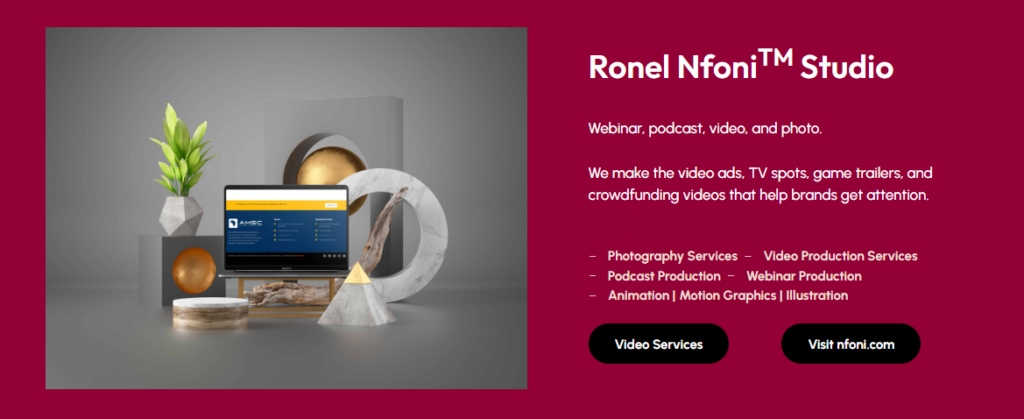
There are two corporate structures:
The C Corporation
Unless they submit an application for S company classification to the IRS, all newly incorporated businesses are automatically C corporations. Similar to LLCs, C corporation owners have limited liability, thus business losses are not their responsibility. You can go public with your company and offer corporate stocks and bonds to investors if you need to raise a considerable amount of money. On the other hand, you are subject to taxation twice: once on your own pay and once more on business profits.
The S Corporation
You must first establish a C corporation before applying to the IRS for S corporation taxation status in order to establish a S corp. Many S companies function as pass-through entities, just like LLCs.
Owners pay themselves wages and income taxes on such earnings, but are exempt from paying taxes on the remainder of their profits. You will need to change your S corporation to a C corporation if you intend to go public in the future because S corporations are limited to 100 shareholders.
After incorporating your business, your accounting expenses will almost probably increase. If you choose to register your firm as a corporation, you will almost probably pay extra each year for accounting services because corporations are required to release regular financial statements and tax season is considerably more complicated
Get the necessary business licenses
You’ll likely require a business license if you want to operate as something other than a sole proprietor using your own name, such as an LLC, LLP, or corporation.
A DBA license and a sales tax license, for instance, are required if you operate a dropshipping business from home under a false name. It’s crucial to find out if you fit into any of the categories in your jurisdiction because business licensing and permitting requirements differ from state to state.
Branding Your Business
Although visual branding is a complicated subject deserving of its own 2,000-word piece, we’ll cover it briefly here. You need to design a logo and complementing branding colors that are consistent across all of your sales channels if you want to make your business memorable and build brand awareness.
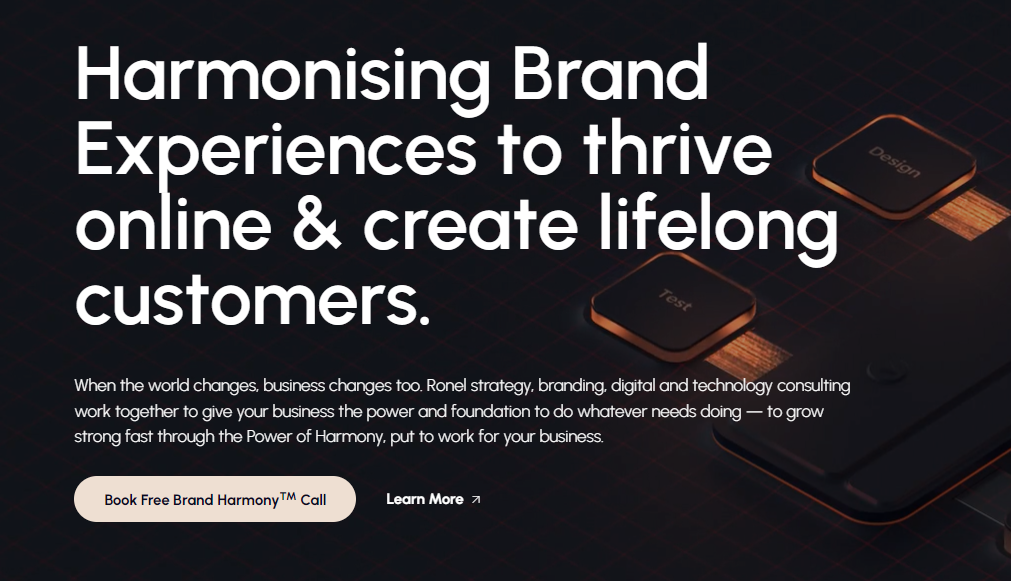
To create a professional-looking logo, you may either do it yourself or hire a freelance designer.
In either scenario, take into account the following when branding your business:
Relevance: Your logo should have a function and immediately convey to customers what products or services your company offers.
Maintaining simplicity is important because you want your customers to be able to recall your brand.
You need a logo that can be used on both your website and a billboard to be versatile. It must scale both up and down without compromising its integrity or purpose.
Uniqueness: Your logo needs to be distinctive enough for customers to connect it to your brand.
Even without any supporting text, the best logos in the world are instantly recognizable; young children can sometimes recognize McDonald’s Golden Arches from half a mile away.
Sierra Designs, a company that sells high-performance camping gear, features a straightforward, recognizable logo that looks good with or without the accompanying logotype.
Use the colors of your logo to inform the rest of your visual branding, such as the layout of your website, the design of your packaging, your marketing emails, and your advertisements.
How to find and produce goods for your online business
Now that we’ve discussed some generalized product sourcing strategies, let’s become more particular about them. The three main methods of product sourcing are dropshipping, wholesalers, and DIY production. To create a balanced income stream, many online shops mix several strategies.
DIY Products or Services
Since ancient times, people have produced and sold goods. Neolithic traders had to travel overland to trade sculptures, beads, and ceramics; today, you can sell handmade goods all over the world online.
DIY projects typically have minimal startup costs, but you have to invest a lot of your own time to make up for it. On the other side, you have total control over the design and UX, and you may make immediate design changes if items don’t operate as intended.

If you decide to do it yourself, bear in mind:
As your firm grows, you can choose to collaborate with a manufacturer to produce goods in bulk.
- Establish a trustworthy supply chain for raw materials.
- Prior to mailing, decide whether you’ll use a shipper or send the things yourself.
- Establish a manufacturing schedule.
- Consider the location of your inventory storage.
Manufacturer or Wholesaler
If you’re prepared to produce and deliver goods on a larger scale, think about sourcing your goods from a manufacturer or a wholesaler. Let’s examine both choices in greater detail:
Wholesalers
Brand-name products are sold in bulk by wholesalers. They also offer white-label goods in big quantities. You brand the generic goods and resale them to your clients.
With a wholesaler, you can save time and money if you’d rather focus on marketing and growing your business than product development.
Manufacturer
You can work with a manufacturer if you have a product prototype or if you want to expand your do-it-yourself business. Private-label products are produced in large quantities for consumers by production companies in the United States and abroad.
Some producers work with business owners to develop new items and oversee the entire process from beginning to end.
Consider the following before working with a manufacturer or wholesaler:
- Find out what it will cost to produce.
- Find out the minimum order amounts.
- Obtain an estimation of the production time.
- Examine your alternatives for bulk shipping.
- Review contracts thoroughly.
- Ask about warranties and post-purchase assistance.
Dropshipping
Dropshipping may be your best option for getting products if you lack an original idea for a product, would rather avoid working with a manufacturer, and would prefer not to stock goods in large quantities.
You turn into a retail distributor when you work with a dropshipping vendor.
The vendor makes products and ships orders on your behalf while you list the wholesaler’s inventory on your website.
Dropshipping is a quick and simple business concept, although it has a lower profit margin than white-label or private-label resale. Some businesses combine DIY and dropshipping.
An artist who sells and ships original paintings from their home might also use a dropshipper to sell replicas and branded mugs.
Write a business plan for your online store
Before you dive in headfirst, take some time to consider the future. Approximately 50% of new enterprises fail within the first five years, frequently as a result of poor planning.

You can better grasp your distinctive offering by writing a business strategy, which can also help you:
- Discover the tools you require to manage your business.
- Discover what your rivals are doing.
- Spotting business possibilities
- Decide who your market is.
- Envision the future of your business.
Typically, a business plan has seven sections or more. To develop your own plan, you might refer to the example below:
Executive Summary
Your business idea is condensed into a few paragraphs in an executive summary. It is located at the top of your company strategy and provides information about:
- What your business does
- Aims for your business.
- The goods or services you provide.
- Your intended audience.
- Your avenues for sales.
- Your marketing approach.
Your executive summary will very definitely be written last. By doing this, you’ll have time to consider each of the other sections of your business plan before offering a summary.
Business Overview
This is where you provide readers a really complete overview of the business. This section starts with your company’s name and then lists its domain name and legal form (LLC, S-corp, etc.).
Then you will outline your company’s vision before writing a succinct mission statement. Include some background information on your business concept and distinctive value offer, and finish with a list of your main rivals.
Market Research
In the market analysis area, you have the opportunity to demonstrate your familiarity with your target consumer group. The results of a SWOT analysis (strengths, weaknesses, opportunities, and threats) are frequently used by business owners as a starting point.
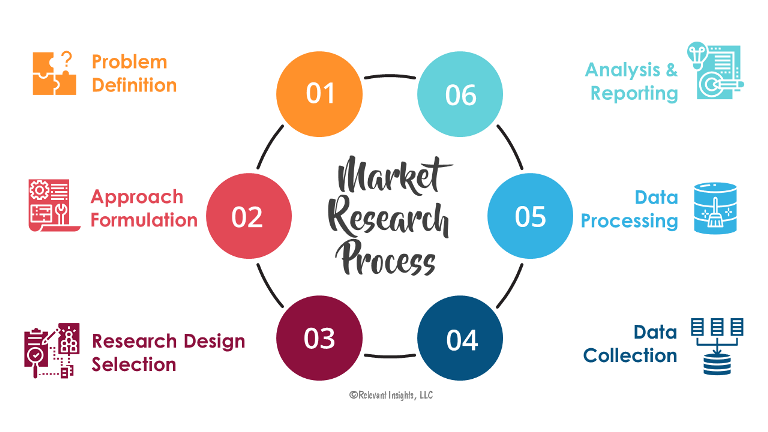
They next proceed to the analysis of competitors.
Competitive assessments assist you in better understanding your rivals so you can advance in the market.
They accomplish this by noting each competitor’s:
They accomplish this by noting each competitor’s:
- Domain name and website traffic volume.
- Features of the business and the products.
- Pricing policy for goods.
- Vision and mission statements.
A paragraph explaining how you plan to position your business as an industry leader finishes this section.
Three basic methods exist for doing this:
- Customer segmentation: You’ll provide top-notch goods in a hot niche market.
- Cost leadership: Your goods are more affordable than those of your competitors.
- Differentiation: You provide a special product or a much improved version of a rival’s offering
Products and Services
Here, you can go into further detail about your good or service. If you sell a wide range of products, describe your inventory in general terms and explain how your business differs from competitors in the market. Give your readers more information about the products or services you offer.
Marketing Strategy
You’ll describe your marketing strategies to the audience in this part. A breakdown of your marketing budget is shown first, followed by a list of the marketing channels you plan to employ to sell your company.
Marketing channels can be divided into two groups:
Organic Marketing Channels: Organic traffic to your website is brought about through search engine optimization (SEO) strategies, content marketing, social media pages, and blogger networks.
Organic marketing avenues are cheap, increase in value over time, and support the growth of your company.

Paid Marketing Channels: Paid marketing channels are an appealing option for startups because they produce results rapidly. Advertising on social media, influencer marketing, pay per click (PPC) ads, and affiliate marketing all cost money, yet they all generate solid leads.
Operations and Logistics Plan
Everything you need to physically operate your business is covered by your operations and logistics strategy. This includes the demand for office space, technology, employees, and warehouses.
Don’t forget to provide information on:
- Your supply chain.
- Your production plan.
- Shipping and fulfillment options.
- Where you’ll store inventory.
Investors can better grasp the operating costs of your own e-commerce business by reading this section of your business plan.
Financial Plan
To start your e-commerce firm, you’ll need money. To start trading, you’ll need investors or a bank loan if you don’t already have the start-up costs in cash. You must persuade potential investors and lenders that you have sound financial management skills and the ability to turn a profit with your company.
Most financial plans include:
- An income statement is a breakdown of all of your income sources and all of your spending for a specific period of time.
- A balance sheet is a list that includes both your assets and your liabilities, ending with shareholder equity.
- An actual revenue and expense statement that shows when money is received and spent is known as a cash-flow statement
Finding investors and persuading your bank to grant important company loans will be considerably simpler if you have the correct business plan in hand.
Create your online store.
Now that you’ve produced a business plan, registered your company, and evaluated your product concepts, it’s time to build your website. Because they are easy to use and provide website-building tools and ecommerce platforms, sales as a service (SaaS) platforms are the preferred option for the majority of online retailers and wholesalers.
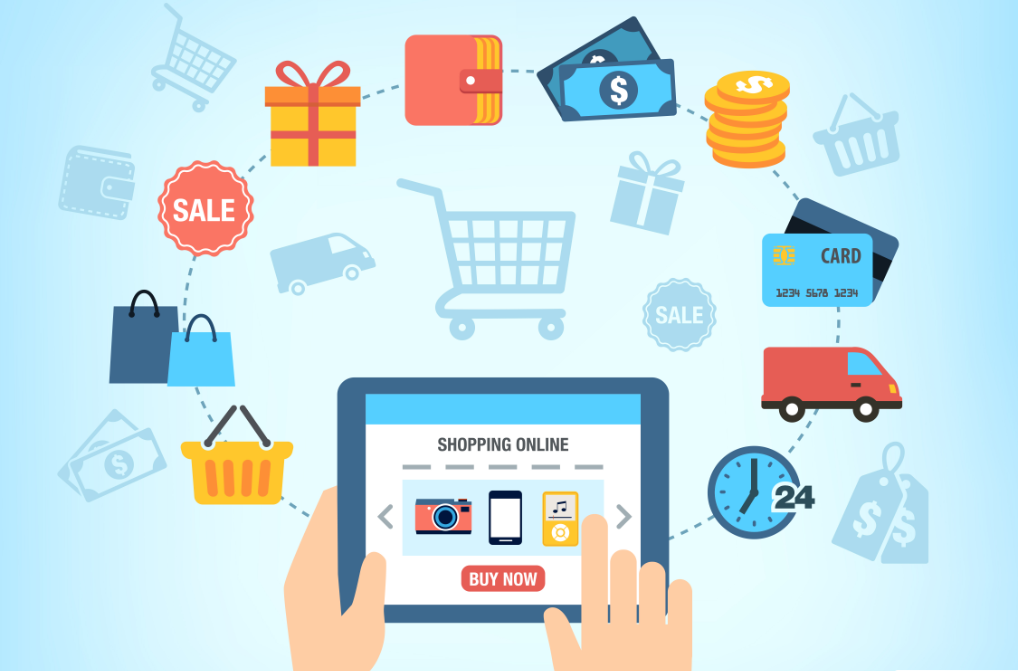
There are numerous SaaS providers, and some of them are superior to others. Start with a free trial to evaluate each option’s characteristics before picking one.
Consider the following characteristics while choosing an e-commerce platform:
- Hosting for domain names
- Excellent uptime and speed.
- A top-notch website builder within the product.
- User-friendly, free themes.
- Web design that is responsive.
- A sizable app shop with dependable plugins.
- Complete PCI conformity.
- Fully customisable URLs and built-in SEO tools.
- Analytics, promotions, discounts, and other e-commerce marketing capabilities.
- Telephone, email, and live chat customer service.
- An endless selection of products.
- Low credit card processing costs and no transaction fees.
BigCommerce
BigCommerce, arguably the greatest SaaS platform available, has several tiers, from Standard to Enterprise. High-quality themes, a responsive, mobile-ready website, numerous sales channels, unlimited storage, unlimited bandwidth, and expert analytics are all features of all BigCommerce plans.
Custom SSL, segmentation tools, and abandoned cart saver are just a few of the extra features you can use if you choose the Pro plan. Another key benefit of BigCommerce is its top-notch customer support. BigCommerce, which is scalable and strong, is excellent for expanding enterprises.
They also have a brand-new WordPress plugin called BigCommerce for WordPress, which is a rival to WooCommerce, if you’re a fan of WordPress.
My top pick for medium-sized to large enterprises is BigCommerce, and you can get started with a 15-day free trial.
Begin using BigCommerce.
Wix
Wix, which is very well-liked by small businesses, offers a good selection of thoughtfully created templates, SEO capabilities, an intuitive WYSIWYG editor, as well as a number of promotion and gift card alternatives. Setting up a website is simple, and you can create a site in about an hour.
Wix includes a built-in store-building tool, and you can use it to arrange products or services in an appealing way using its integrated product galleries.
Wix is a wonderful option for businesses with a small selection of products because of additional features like a secure checkout, round-the-clock customer service, and different payment channels.
Start by using Wix’s free trial.
A major player in e-commerce is Shopify. They function well for dropshipping stores overall because store setup and integrations are quick and simple.
Shopify
Shopify is a well-known name in e-commerce, debuted in 2004 and swiftly rose to prominence as a SaaS supplier. The platform offers benefits including free SSL for websites, marketing tools, and respectable customer care.
Shopify does have several shortcomings. Shopify might not be the best choice for you if you have a vast catalog with numerous product alternatives (size, material, color, etc.), as you are only allowed to have 100 product variants.
Another tiny flaw is SEO. You must use the Shopify standard and cannot construct your own unique URL structure.
They’re a fantastic, simple to use ecommerce website platform that’s perfect for dropshippers and small merchants overall.
3dcart
The finest thing about 3dcart is its robust SEO capabilities. Zero transaction fees, limitless bandwidth, and a ready-made Facebook store are further benefits. The promotion manager in 3dcart lets you make customizable discounts, scheduled promotions, coupon codes, and more.
Compared to many other SaaS platforms, 3dcart offers a more affordable basic plan, but as with other things, you get what you pay for. This supplier is better suited to smaller companies than mid-size sellers trying to scale because it has fewer features, fewer themes, and no enterprise functionality.
Volusion
A user-friendly e-commerce veteran is Volusion. Kevin Sproles, the company’s creator, began designing websites in 1999 when he was just 16 years old. At age 19, he started Volusion in 2002. This reliable all-arounder is reliable and practical and offers a terrific value basic package for $26 per month that includes online assistance, an unlimited number of products, and no transaction fees.
The platform’s improved content builder allows you to modify article pages from the store’s front end, allowing you to make any necessary changes right away if you notice anything out of place. You can employ Volusion’s internal team to assist you in developing a top-notch commerce plan if you have no experience with SEO or marketing.
Although Volusion has some excellent e-commerce features, I advise using others on this list first.
Squarespace
Squarespace can be the best ecommerce solution for you if you’re a visual person with basic ecommerce requirements. Although it isn’t a platform for large corporations, it does provide a very user-friendly drag-and-drop website builder.
Customers of Squarespace have access to a diverse selection of third-party shipping and fulfilment apps, a powerful portfolio of mobile-friendly templates, and product management solutions.
You must choose one of the more expensive choices from Squarespace’s four service tiers in order to set up an online store. Squarespace SEO can also be challenging because certain sites appear to have duplicate content due to URL patterns that imitate one another. This can significantly lower your Google rating.
You can read my whole guide to starting an Etsy store if you sell handcrafted goods.
Overall, Squarespace is a great website builder, but not the best for e-commerce.
Driving traffic to your online store.
Opening an online store is simple. The difficulty arises when you have to direct traffic there. We’ll discuss both paid and unpaid digital marketing strategies to increase website traffic and revenue.
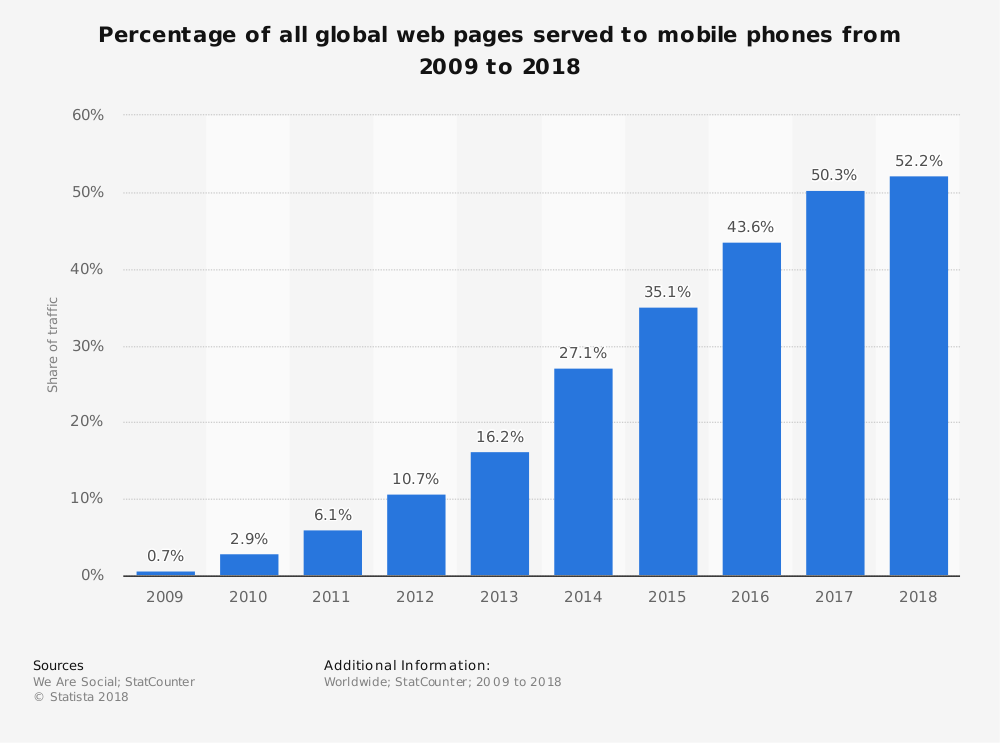
Channels for Organic Marketing
Although it takes time for organic marketing channels to gain popularity, they offer the best long-term returns on investment (ROI). Among the most effective strategies are:
- SEO (search engine optimization): Use of pertinent keywords in page text, product descriptions, and other online content raises a website’s position in search results.
- Content marketing entails creating a blog on your website, optimizing blog entries, and creating content to draw in targeted visitors.
- Social media Marketing :. Facebook, Instagram, and Twitter pages that are active stimulate new website visits.
- Link building (off-page SEO): Without a ton of high-quality, pertinent links pointing to your website, it is very difficult to attract Google traffic. These link-building techniques include guest blogging and establishing link alliances with websites that are related to your niche.
- Email marketing: For e-commerce companies, email is a very important marketing channel. Select an email marketing provider that enables you to send welcome emails with discounts, abandoned cart emails, email popups, and targeted, image-rich marketing emails for seasonal promotions.
Save time & money with simple and reliable cloud hosting trusted by 80,000+ agencies, developers, and businesses that demand high performance from their websites!Paid Advertising Media
Paid marketing channels are a popular option for start-ups and big-budget companies since they deliver immediate results and make it simpler to build a lucrative online store. Despite the fact that they offer immediate results in online marketing, they often have a poorer ROI than free techniques (excluding affiliate marketing, which has a strong ROI).
Here are some of the most effective paid acquisition channels for ecommerce firms include:
- Affiliate marketing: Bloggers and other online influencers with large followings sign up for your company’s affiliate program in exchange for commission payments for any purchases they contribute to by using their affiliate links.
- Influencer marketing: For a price, social media stars on sites like Instagram, Facebook, TikTok, and others promote your goods. (My guides on how to monetize TikTok and Instagram are available here.)
- PPC (pay-per-click) advertising You create PPC advertisements with Google and pay every time a user clicks on them. Additionally, Google Shopping ads that link to your product catalog and make your products accessible on the Google Shopping platform can be considered in this.
- Paid social media advertisements on Facebook can retarget former website visitors and target brand-new prospects. Utilizing Facebook Advertisements’ DPA ads is one of the greatest tactics. Facebook users who have visited your product pages see these ads, which feature the exact same products as those on your website. Additionally, Facebook allows for direct sales via product listings.
The best marketing plans include a variety of channels to draw in customers and increase conversion rates.
Today, if I were to launch an e-commerce company from scratch, I would begin by developing a solid SEO plan. This includes performing keyword research on phrases with a high search volume that may attract your target market.
If you offer camping gear, for instance, you might make a blog article about “The Top 10 Backpacking Tents” and include links to your product pages in the text.
After that, you should create a solid link-building plan and collaborate with bloggers in your niche to gain backlinks. The Domain Authority (DA) of your website will rise as a result, making it simpler to rank each of your pages in search results.
Finally, I would employ paid advertising strategically, beginning with Facebook retargeting advertisements. If you can provide a significant ROI, only then would I switch to PPC ads on Google.
Essential Addons for Elementor Most Popular & Advanced Elements Library. Join With 1 Million+ Happy Users & Improve Page Building ExperienceDetermining the success of e-commerce
Google Analytics and other ecommerce analytics solutions assist you in understanding how users arrive at your site and what they do once they are there. In the end, they also shed light on your sales and conversion rates.
You can improve product descriptions and page content using the information you get from analytics to increase the number of visitors who become potential buyers.
BigCommerce and other SaaS e-commerce platforms enable Google Analytics integrations. Simply create a Google Analytics account if you’re a BigCommerce customer, then go to the Web Analytics option in the Advanced Settings part of your control panel. To begin, choose the Google Analytics checkbox and enter your tracking ID in the Property ID area.
BigCommerce The Enhanced Ecommerce and Site Search features of Google Analytics integration allow you to assess specific page views and search phrases.
You can examine analytics in your email provider, Facebook Insights, and Google Analytics (site traffic).

Consider the following measurements and key performance indicators (KPIs):
- Sessions: How many times visitors view your website’s content.
- Reach: The overall number of viewers of one of your advertisements.
- How many recipients open your emails and click on the attached links is known as the email click-through rate.
- How many likes, shares, comments, and clicks each of your posts get on social media.
- Abandonment of online shopping carts and checkouts: How many customers add items to their baskets but then quit your site before starting or finishing the checkout process?
- Average order value (AOV) is the typical sum for one order placed on your website.
In conclusion, in order to increase sales, you should consider and implement these findings.
Finish up.
Building a successful online store requires commitment and perseverance. Along with having a fantastic product in a market that is expanding, you also need to have a strong business plan, the ideal e-commerce platform, and a well-thought-out marketing plan.
This may seem like a lot of effort, and it is, but if you divide your objectives into doable steps, you’ll build an online store you can be proud of.
One of the finest choices you may make might be to open an ecommerce business, as the main benefit of online purchasing is that it is available around the clock.
What kind of online store do you intend to start? Do you have any problems right now? Tell me in the comments section below.




Leave A Comment